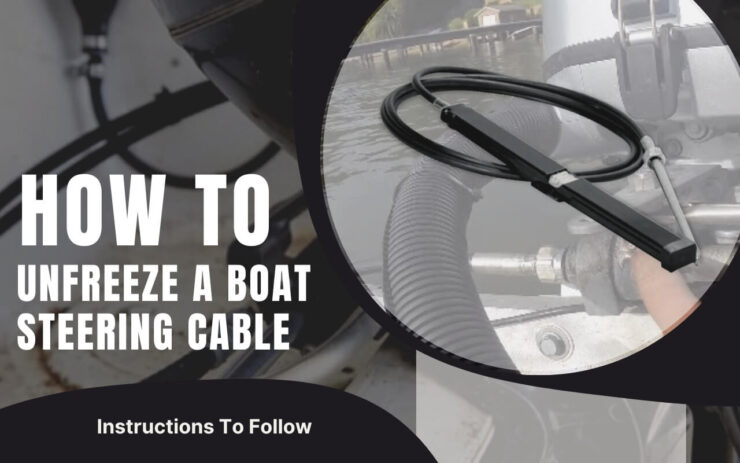Suppose, you’ve gone to a local lake with your friends or family. However, you quickly realize that your boat is not responding to your steering wheel.
It may appear to be a simple task. But if you can’t unfreeze a boat steering cable, it’s going to be a major task.
So, your concern is, how to unfreeze a boat steering cable?
The first thing you must do is use grease in an ample amount. Secondly, you must inspect the steering so that it has no rust.
After that, check that the grease you use doesn’t make any disruption. That is, you have to grease the way so that it doesn’t enter the support tubes.
You need to lubricate the engine regularly as well. Finally, you need to replace the oil which is unclean.
This is insufficient for you to comprehend the complete situation. So, please go through the details we’ve got if you’ve some time! Sounds good? Let’s just jump into it then!
Table of Contents
ToggleWhat You Will Need
To unfreeze a boat steering cable, you will need the following items:
- Penetrating oil: WD-40 or a marine lubricant is recommended.
- Heat source: A heat gun or hair dryer can be used to warm up the cable.
- Protective gloves: To protect your hands from getting burned by the heat source.
- Rags or cloths: To clean up any lubricant or residue that may be present on the cable.
- Pliers or adjustable wrench: To apply gentle pressure to the cable if needed.
It is important to note that if the cable is severely frozen or damaged, it may be best to consult with a professional or replace the cable entirely, as attempting to unfreeze or repair a damaged cable can pose a safety risk and potentially result in further damage to your boat’s steering system.
Reasons & Solutions for A Frozen Boat Steering Cable
We’ve got to know the gist of this issue. But now we’d like to describe the reasons in detail with the solutions.
Reason 1: Having Insufficient Grease
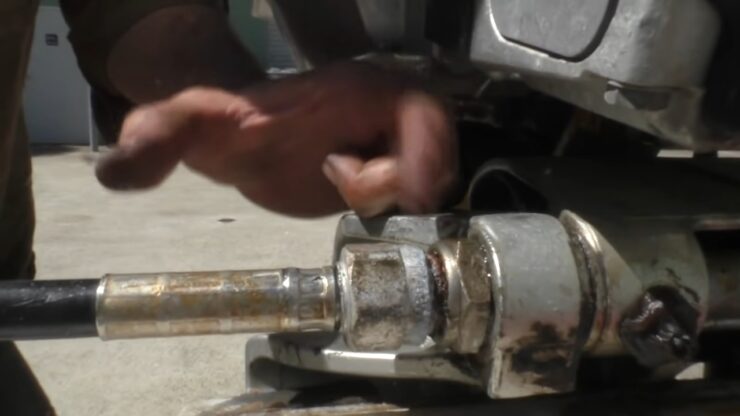
You’re having stiff board steering. The very first reason might be due to insufficient grease in your engine.
Grease is one of the most crucial and necessary components for the outboard engine.
As a result, the other components can continue to function and move as they should.
The steering wheel will freeze if there isn’t enough grease or lubrication.
Therefore, moving it or turning it will be quite tough.
Solution
Firstly, look for the powerhead on the shaft where your motor pivots. This is one of the areas where you should concentrate on lubrication.
Many well-lubricated nipples will facilitate fluid and unfettered movement.
This exact area should be greased once a year, according to the golden rule. Moreover, make sure to lubricate the steering.
These greases are quite good lubricates with their excellent quality. You can use them as per the instructions given on the packets.
By the way, always keep lubricating items with yourselves.
This will help you lubricate the engine quickly when problems like these arise.
Reason 2: Corrosion of The Cable of Steering
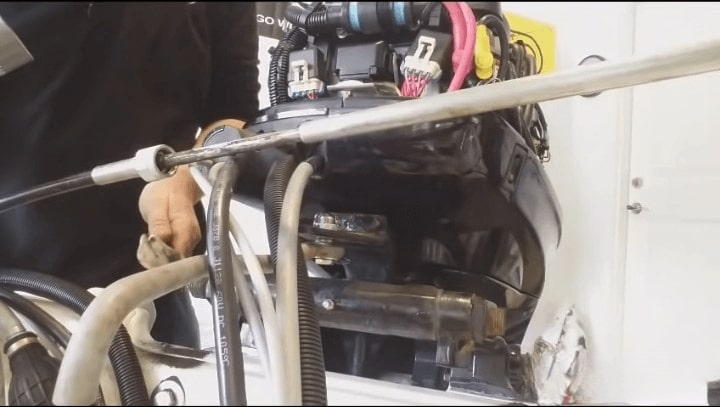
There is another common reason for the stiffness of your boat’s steering cable. It’s due to the presence of corrosion in the steering cable.
Now, you might see corrosion and rust forming on the steering cable. As a result, its usual mobility may be restricted.
Thus, the steering cable becomes rigid and frozen. This is particularly problematic with saltwater vessels. Moreover, it’s a concern since salt hastens the corrosive and rusting processes.
Solution
You can clean the steering cable that is rusted. You could accomplish it with a scrubber. For your motor, there are a variety of high-quality cleaning agents that perform wonders.
However, you may discover that your steering cable has already been heavily rusted. In this case, replacing it with a new one is the best alternative.
Reason 3: Grease Entering The Support Tubes
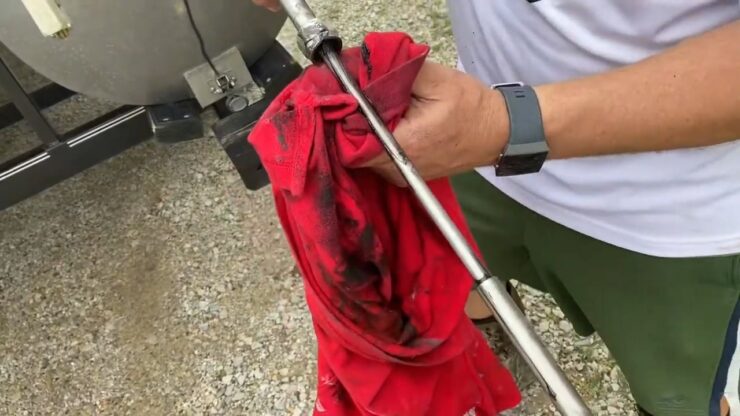
On the top of the engine, you’ll find support tubes. Grease fittings are included there as well. The grease from the fittings can get sucked into these support tubes in some situations.
This usually happens when the grease is surplus in amount.
A hydraulic lock occurs due to this. Because the grease is pushed up through a cable jacket. This may also lead to issues with the boat gas tank vent.
Solution
Regrettably, there is only one solution to this dilemma. The problem can be rectified by replacing the steering wire entirely.
To replace the steering cable, a few directions are needed to be followed. It’s always better if you contact an expert for this.
Reason 4: The Sticky Steering
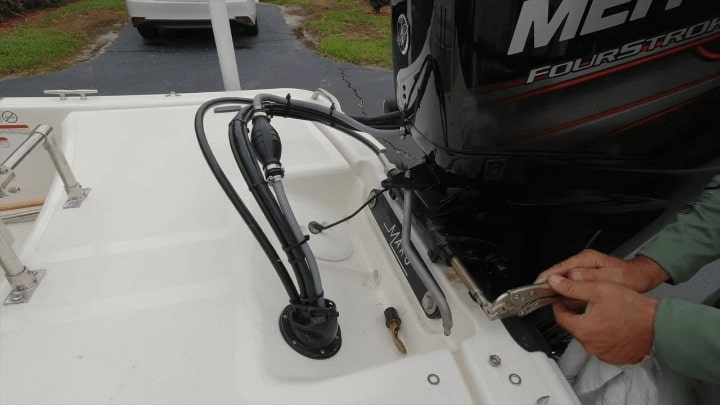
Now, you can have issues with your engine as well. For example, you might encounter sluggish steering. The issue is most likely caused by the engine pivot.
The engine pivot becomes inflexible due to a lack of lubrication. For this issue, fluid leakage in the hydraulics may also be evident.
Moreover, you may also see oil leaking from the lower unit weep hole. The presence of any leaks would lead to a collision.
Solution
There’s an easy way to inspect the problem. First, disconnect the connection from your tilt tube and see if this is the case.
The problem of sticky steering has a simple solution. Simply lubricate the engine’s pivot points on a regular basis.
Cleaning out the steering and lubricating it properly is the instant solution to it.
Leakage issues, on the other hand, are quite simple to remedy. Also, the deteriorated seals must be replaced.
Also, make sure the ram shaft isn’t dripping wet. If that’s the case, wipe the damp area and double-check.
Another thing should be considered about this issue. Make sure you have the best reel for flexible steering.
Reason 5: Dirty Or Unclean Oil
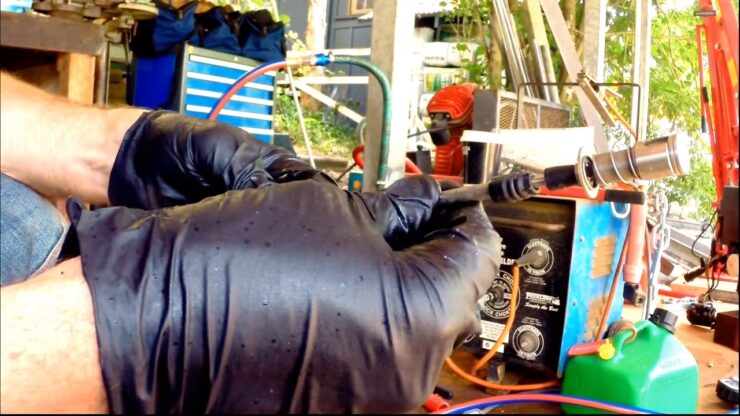
Only clean oil will allow the hydraulic system to function properly. However, if the oil contains abrasive dirt, the entire procedure may be jeopardized.
This eventually freezes a boat steering cable. If you don’t pay attention to this during installation, you’ll get more issues to face. Moreover, dust, debris, and dirt will get into the oil and hoses.
Solution
This issue has a straightforward remedy. If you want the steering to function properly, you must replace the unclean oil.
To replace the oil, you’ll need to follow a few steps. Furthermore, you should change the oil every 5 years.
You can also make changes based on the manufacturer’s recommendations. Even if the oil is not tainted, it must be changed.
Now, these are the reasons and solutions to unfreeze a boat steering cable. Hopefully, your concern has been answered!
Reason 6: Age
When a boat steering cable becomes old, it can become more susceptible to freezing due to factors such as worn or brittle cable, lack of lubrication, and exposure to extreme temperatures.
To prevent a frozen boat steering cable, it is important to regularly lubricate the cable with a marine lubricant, inspect and clean the cable of any rust or corrosion, replace the cable if it is severely worn or damaged, and store the boat properly to protect the steering cable from extreme cold temperatures.
By taking these steps, you can help ensure the smooth and safe operation of your boat’s steering system, even as it ages.
Reason 7: Exposure To Extreme Temperatures
When the cable is subjected to very low temperatures, the metal parts can become brittle and more susceptible to freezing.
This is because cold temperatures cause the metal to contract, which can cause it to freeze in place and become difficult to move.
To prevent a frozen boat steering cable due to exposure to extreme cold temperatures, it’s important to take steps to protect the cable when storing your boat in a cold environment.
This may include removing the cable and storing it in a warm, dry place, or insulating the cable and other parts of the boat’s steering system to help protect them from the cold.
FAQs
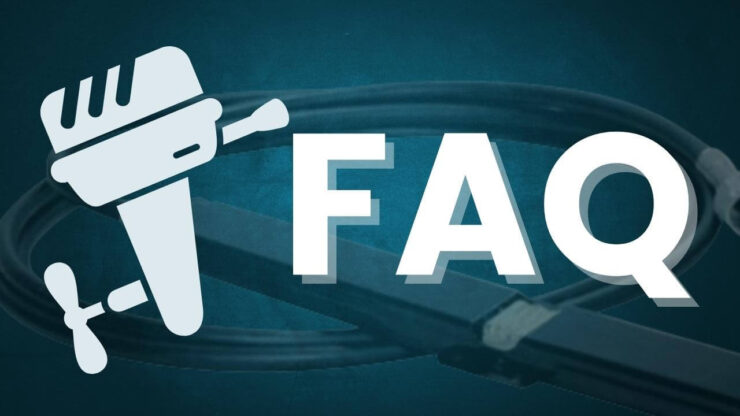
How can I tell if my boat steering cable is frozen?
If your boat’s steering cable is frozen, you may notice that the steering wheel is difficult to turn or that it feels stiff or unresponsive.
In some cases, you may hear a grinding or crunching sound when you try to steer.
How much would it cost to replace the steering cable?
The cost of replacing a boat steering cable at a dealership might range from $300 to $650. It is usually determined by the make and model of the boat.
Many others, on the other hand, prefer to do it themselves. Because replacing the boat steering cable is a pretty simple task.
How can I inspect a boat steering cable?
There are a few stages to measuring a rotary steering wire. Only measure the cable jacket in inches and lay the cable out exactly straight. Then add another 18 inches to that measurement.
Round up to the next foot after that. You might also check the length of a rack and pinion steering cable. In that scenario, only the cable jacket should be measured in inches.
How do boat steering cables work?
Hydraulic steering is commonly employed on boats with outboard motors of mid to high horsepower.
The helm is responsible for converting the spinning motion of the steering wheel into a push-pull movement on the cable.
This cable controls the rudder’s movement to the left or right. It allows the captain to steer the boat in the desired direction.
What should I do if I’m unable to unfreeze my boat steering cable?
If you’re unable to unfreeze your boat’s steering cable, it’s important to consult a professional for further assistance.
A marine mechanic or boat technician can diagnose the problem and recommend the best course of action to resolve it, whether that involves repairing or replacing the cable.
Final Thoughts
In conclusion, a frozen boat steering cable can be a frustrating and potentially dangerous problem, but with the right steps, it can be prevented and resolved.
If your boat’s steering cable does become frozen, it’s important to address the problem promptly and seek professional assistance if necessary to avoid damaging the cable or other parts of the steering system.
By taking care of your boat’s steering cable, you can help ensure that your boat remains safe and maneuverable for years to come.
Now, you know how to unfreeze a boat steering cable! We hope our portrayed reasons and solutions were really helpful to you!
Happy Sailing!
I’m Liam Jackson, the proud owner and driving force behind KayakPaddling.net. Born somewhere in the expansive beauty of the United States, I’ve nurtured a lifelong passion for kayaking and fishing that has led me to explore the far corners of our nation’s waterways.
Related Posts:
- 16 Best Kayak For Beginners 2024 - Kayaking Adventure Gear
- 12 Best Beach Wagons & Carts 2024 - For All-Terrain
- How to Stay Safe on Slow Moving Waters When Paddle Boarding?
- Boat Engine Cover Ideas: 3 Amazing Ideas You Must Try
- 10 Best Fish Finders Under $200 2024 - Top Affordable Picks
- 13 Best Fishing Kayak Under $500 in 2024 -…

